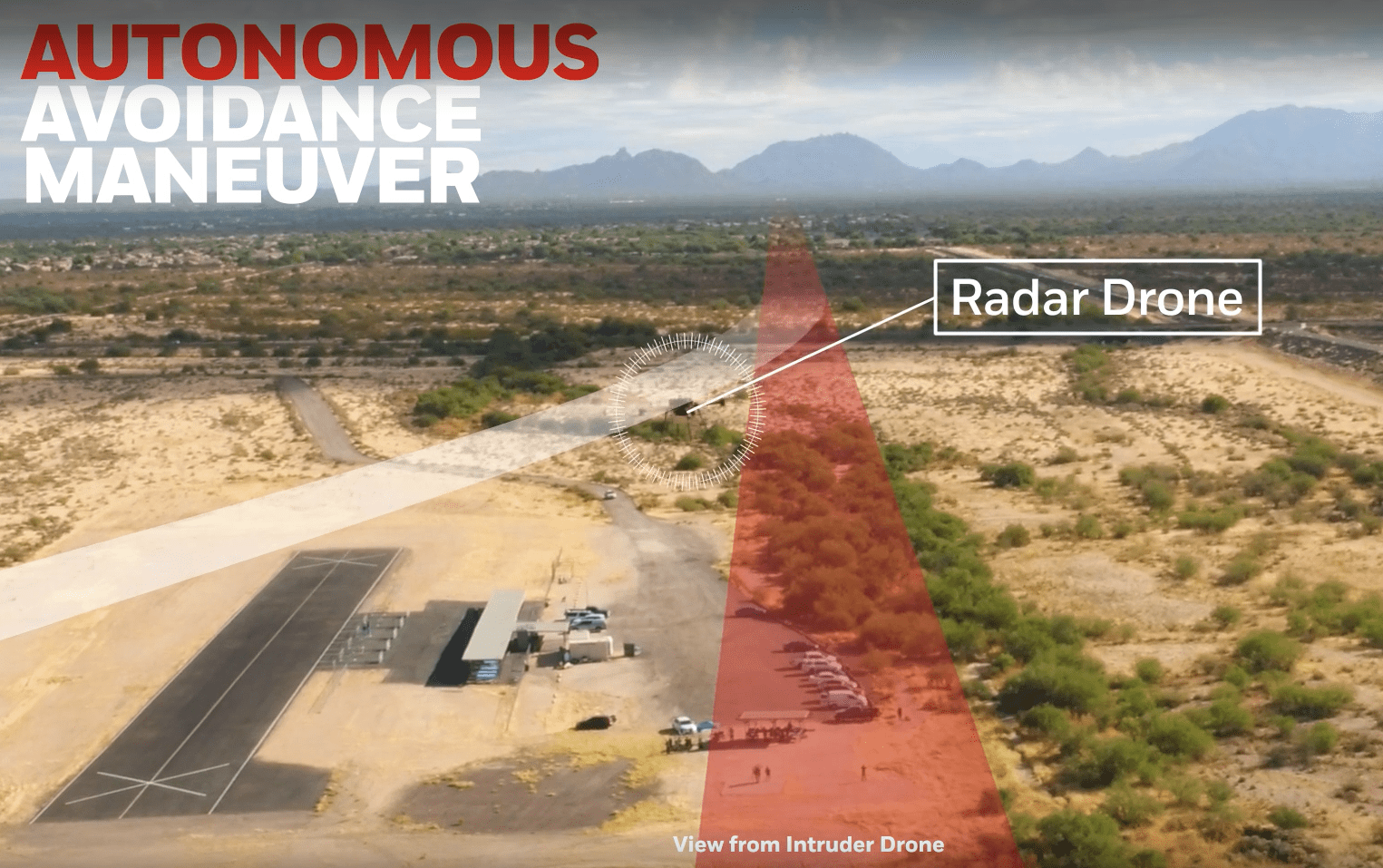
In a series of tests conducted recently in Phoenix, a drone piloted by a Honeywell radar system has emerged triumphant in determining the best flight path and autonomously swerving around an intruder drone that did not have a transponder. This key achievement, the aerospace technology company stresses, will usher in the era of self-flying drones, air taxis, and other advanced air mobility vehicles.
Avoiding unforeseen objects is a key requirement for autonomous drones and other aircraft that fly beyond visual line of sight (BVLOS). While this detect-and-avoid capability is difficult on the ground, in the sky it comes even more complex. This is why pilots, and even huge air traffic control radars, rely on cooperative aircraft to beam out their locations using onboard transponders. Objects without transponders, such as hobby drones, kites, birds, and aircraft with broken transponders are called “noncooperating” traffic.
In the high-stakes tests conducted by Honeywell, the IntuVue RDR-84K radar proved that not only it can detect airborne traffic, but it can also decide autonomously on a course of action. Essentially, the radar takes over navigation and pilots an aircraft to safety using its onboard processor.
As Sapan Shah, product manager, Advanced Air Mobility, Honeywell Aerospace, explains:
We set up the ultimate game of “chicken,” but the RDR-84K simply wouldn’t let these aircraft get into danger. This is a leap forward in safety that could have far-ranging impacts across aviation.
Also read: In a first, FAA approves BVLOS drones at Delek US refineries
Weighing less than two pounds, the RDR-84K is the size of a paperback book. But despite its small size, this radar can see targets three kilometers away. It uses monopulse technology, aka a system of overlapping beams, to increase accuracy and eliminate ground clutter. In addition, the device can map terrain and provide alternate navigation in the case of GPS failure. It can also act as a radar altimeter during landing.
In previous tests, the Honeywell radar system proved it can detect noncooperating traffic while mounted on helicopters and drones. But the new tests conducted in the Arizona desert recently marked the first time the radar performed the avoidance function without human intervention.
Radar drone intercepts ‘intruder’ in the desert
With both drones on autopilot, Honeywell engineers flew two quadcopter drones directly at each other 300 feet above the ground at a test site in the desert.
In multiple flights, the drone equipped with the RDR-84K detected the noncooperating “intruder” drone and evaluated its flight path. Then it calculated an avoidance maneuver and took over navigation – flying left, right, up, down, or stopping midair, depending on winds and other factors.
Once the danger of a collision had passed, the radar released control of the drone, and the autopilot guided it back to its original course.
You can watch the test video here.
Read more: Minimum $30,000 fine for pilots violating Super Bowl ‘No Drone Zone’
FTC: We use income earning auto affiliate links. More.





Comments